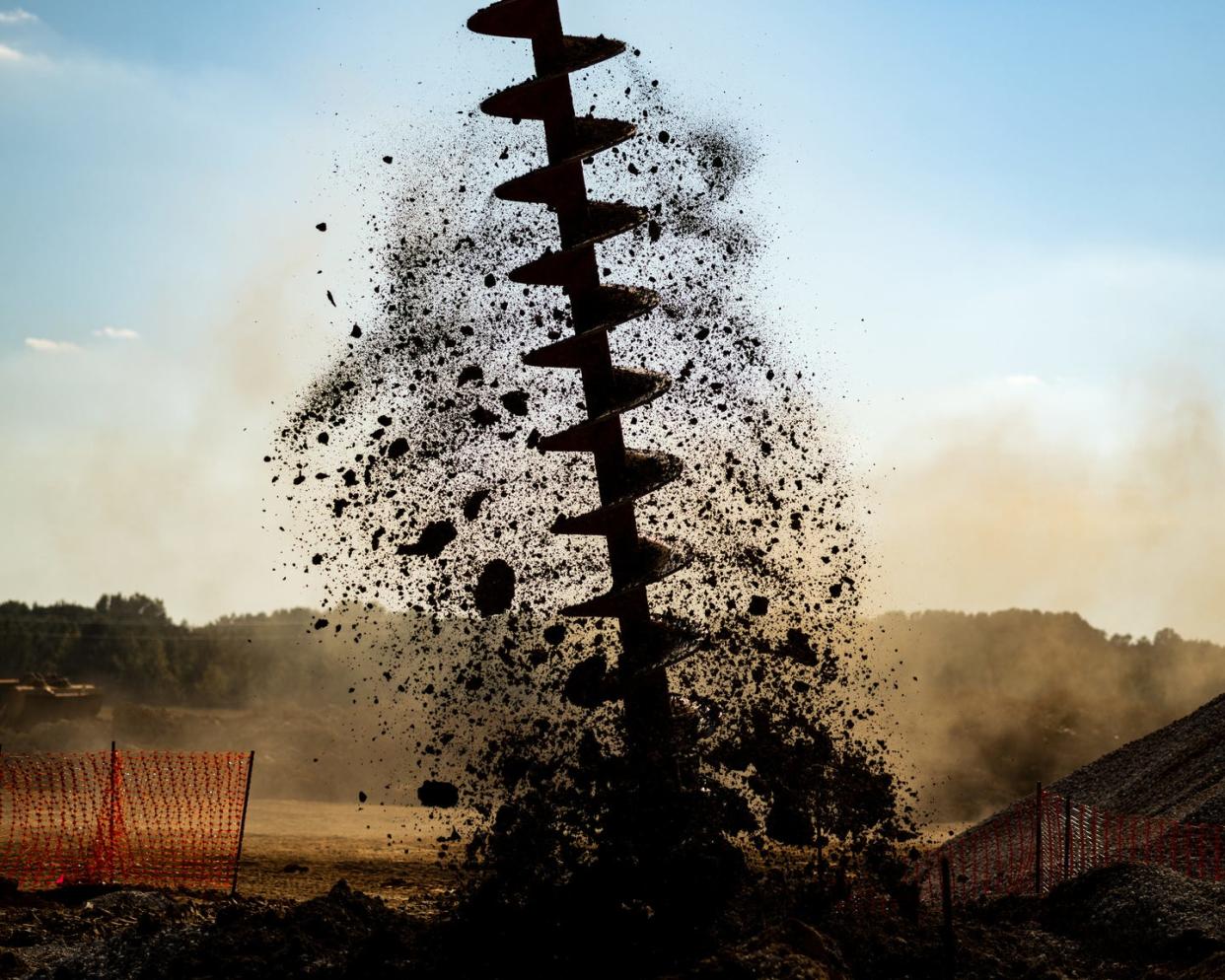Scientists Drilled So Deep Into the Center of the Earth, They Knocked on the Mantle’s Door

"Hearst Magazines and Yahoo may earn commission or revenue on some items through these links."
To understand the mantle—the largest layer of Earth’s rocky body—scientists drill deep cores out of the Earth.
In May of 2023, scientists drilled the deepest core yet and recovered serpentinized peridotite that forms when saltwater interacts with mantle rock.
Although this is the deepest into the mantle scientists have ever drilled, the mission didn’t uncover pristine mantle that lies beyond the Mohorovičić discontinuity, or Moho, boundary.
If you want to understand the geology of our home planet, studying the mantle is a great place to start. Separating the planet’s rocky crust and the molten outer core, the mantle makes up 70 percent of the Earth’s mass and 84 percent of its volume. But despite its outsized influence on the planet’s geologic processes, scientists have never directly sampled rocks from this immensely important geologic layer.
And that’s understandable, especially when you consider that the crust is roughly 9 to 12 miles thick on average. Luckily, that average contains outliers—areas of the world where the crust is actually incredibly thin and faulting exposes the mantle through cracks. One such area is the Mid-Atlantic Ridge, specifically near an underwater mountain called the Atlantis Massif.
On the south side of this massif is an area known as the Lost City—a hydrothermal field whose vent fluids are highly alkaline and rich in hydrogen, methane, and other carbon compounds. This makes the area a particularly compelling candidate for explaining how early life evolved on Earth. Additionally, it contains mantle rock that interacts with seawater in a process known as “serpentinization,” which alters the rock’s structure and gives it a green, marble-like appearance.
It was here, 800 meters south of this field, in May of 2023 that members of the International Ocean Discovery Program (IODP)—aboard the JOIDES Resolution, a 470-foot-long research vessel rented by the U.S. National Science Foundation—extracted a 1,268-meter core containing abyssal peridotites, which are the primary rocks that make up the Earth’s upper mantle. The results of the study were published last week in the journal Science.
Although this makes this particular drill core the deepest sample of the mantle yet, going that deep into the rock wasn’t the goal of this record-breaking expedition.
“We had only planned to drill for 200 meters, because that was the deepest people had ever managed to drill in mantle rock,” Johan Lissenberg, a petrologist at Cardiff University and co-author of the study, told Nature. He said that the drilling was so easy that they progressed three times faster than usual. The team eventually drilled a staggering 1,268 meters, and only stopped due to the mission’s limited operations window.
Andrew McCaig—study co-author and University of Leeds scientist—said in an article from The Conversation that, according to a preliminary analysis of the rock, the core’s composition contains a variety of peridotite called harzburgite that forms via partial melting of mantle rock. It also contained rocks known as gabbros, which are coarse-grained igneous rocks. Both of these rocks then chemically reacted with seawater, changing their composition.
While this core represents an incredibly opportunity to learn more about the Earth’s mantle, as well as give an in-depth look at the geologic substrate upon which the Lost City rests, the mission didn’t quite complete the “grand challenge” of crossing the Mohorovičić discontinuity. Otherwise known as the Moho, the Mohorovičić discontinuity is recognized as the true boundary between the crust and pristine mantle.
Future missions could continue exploring this site near the Atlantis Massif, but sadly, those missions won’t include JOIDES Resolution—the NSF declined to fund more core drilling past 2024. Just as scientists are finally knocking on the door to the Earth’s most ubiquitous geologic layer, the future of these kinds of drilling missions is now uncertain.
You Might Also Like
